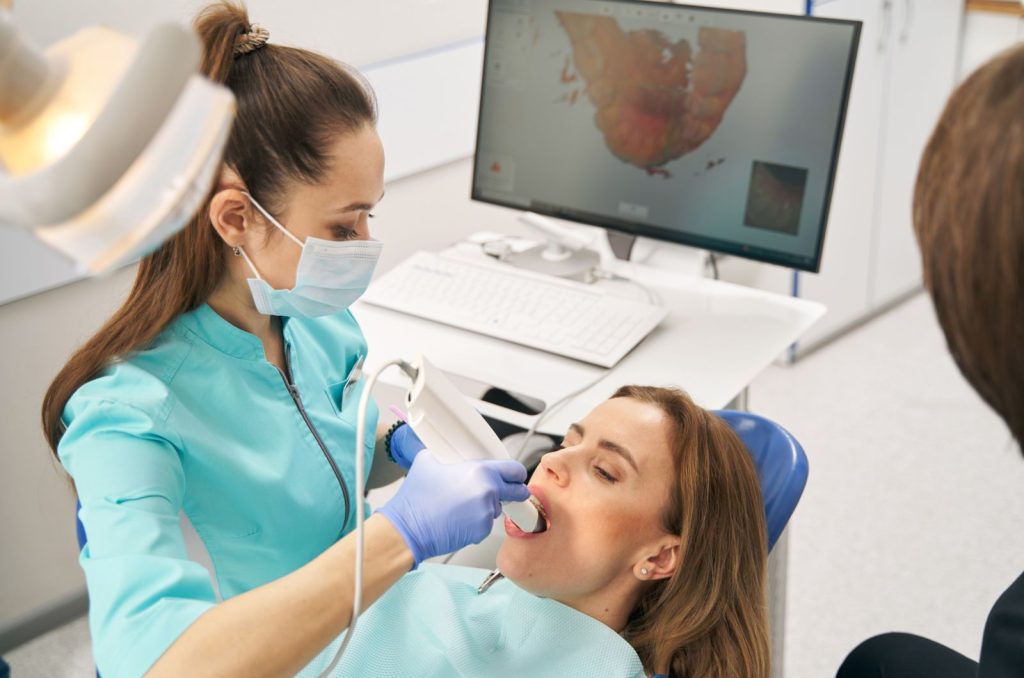
Dental technology has evolved tremendously over the last few decades, giving us the tools to better understand, diagnose, and treat oral health issues. Striding at the forefront of this innovation is the revolutionary technology of 3D dental scans. Imagine being able to view every minute detail, every small nook and cranny of a patient's oral cavity, right down to the root of an individual tooth – this is the astounding precision and accuracy that 3D dental scans bring to modern dentistry. For the patients, this means swifter diagnoses, more precise treatments, and ultimately, improved oral health. For the dental doctors, it's a tool that amplifies their capabilities, making them not just healers, but also innovators in their field.
Now, we feel like we'd like to take you on a journey through the fascinating world of 3D dental scans, highlighting its immense benefits, applications, and the revolutionary impact it has had on both patients and dental professionals. Ready to dive in? Let's go!
Understanding 3D Dental Scans: A Comprehensive Guide for Patients
Welcome to the world of 3D Dental Scans, a ground-breaking technology that has transformed dental diagnostics and treatment planning. 3D dental scans, also known as Cone Beam Computed Tomography (CBCT), enable dentists to visualize oral structures in high definition from different angles.
In contrast with traditional 2D imaging options, 3D dental scans provide a myriad of benefits. They offer enhanced accuracy, markedly improved diagnostic capabilities, and the appeal of minimally invasive procedures. Additionally, 3D scanning technology reduces radiation exposure, prioritizing patient safety.
Let's delve into the process of a 3D dental scan. The scan involves an array of sensors that rotate around the patient's head, capturing comprehensive imaging data. This data is then reconstructed into a three-dimensional model, presenting a uniquely detailed perspective of the oral cavity. Contrary, to what you might think, this state-of-the-art procedure is straightforward, quick, and comfortable!
From orthodontic assessment to the evaluation of oral pathology, the application of 3D dental scans prove to be revolutionary in various dental disciplines. Dive into this guide to learn more about this innovative approach.
Mastering 3D Dental Scans: An In-Depth Guide for Dental Doctors
Understanding and mastering 3D dental scans is crucial for dentists seeking modern approaches to treatment and diagnosis. Previous years have witnessed a shift from conventional 2D imaging to 3D dental scans, reflecting their importance in today's dentistry. The three-dimensional feature provides a more detailed, accurate view of dental structures enabling precise measures in surgeries and implants.
Understanding the Technologies Behind 3D Dental Scans
Key technologies integral to 3D dental scans include Cone Beam Computed Tomography (CBCT) and intraoral scanners, offering dentists an extensive field of view. Dynamic imaging, enabled by CBCT, unfolds the nuances of dental structures, although clinicians need to manage radiation exposure accordingly. Conversely, intraoral scanners eliminate radiation concerns, capturing high-resolution images of dental anatomy, crucial for orthodontic treatments and prosthesis delivery. Supporting these systems are analytical software tools providing dentists the interpretative power of these scans.
Interpreting 3D Dental Scans
3D dental scans, as alluded to in the patient's guide, widen the scope of diagnostic procedures. From assessing dental anomalies to planning invincible aligner therapy, these scans serve as a backbone supporting varied dental interventions. The acquired images necessitate accurate, informed interpretation, a crucial requirement for effective treatment planning.
Best Practices for 3D Dental Scans
Mastering 3D dental scans also demands embracing best practices. These include correct patient positioning, optimal procedures for image acquisition, and measures for ensuring patient comfort. Maintenance of equipment and calibration is equally essential for obtaining accurate, high-quality images.
The advancement reflected by 3D dental scans urges dentists to tread this path, enhancing their practice with this remarkable technology.
For more information >> https://facialimagingmobile.com/services/scan/
